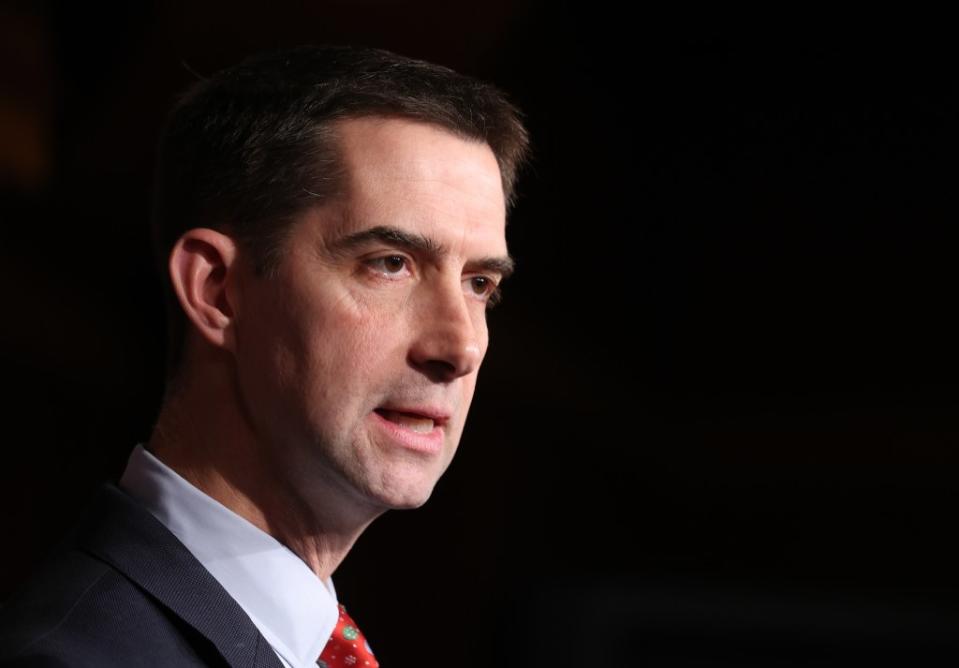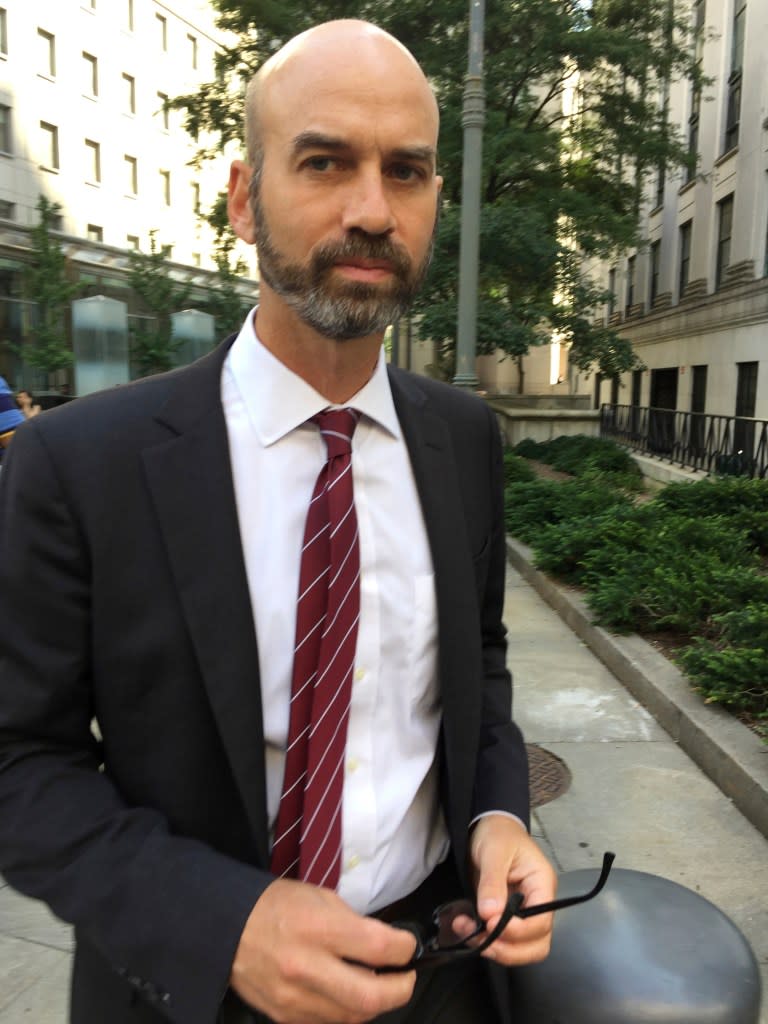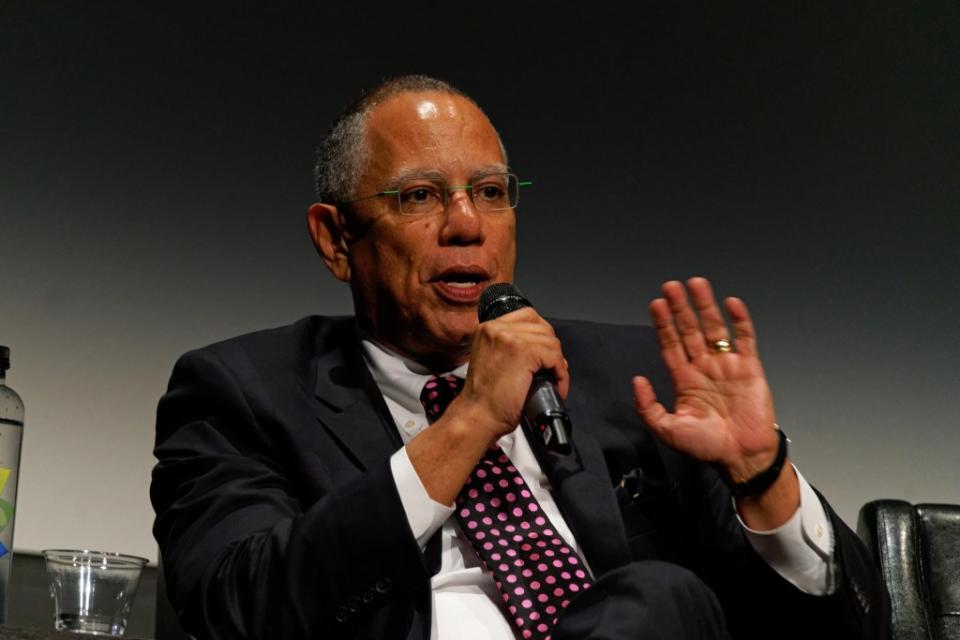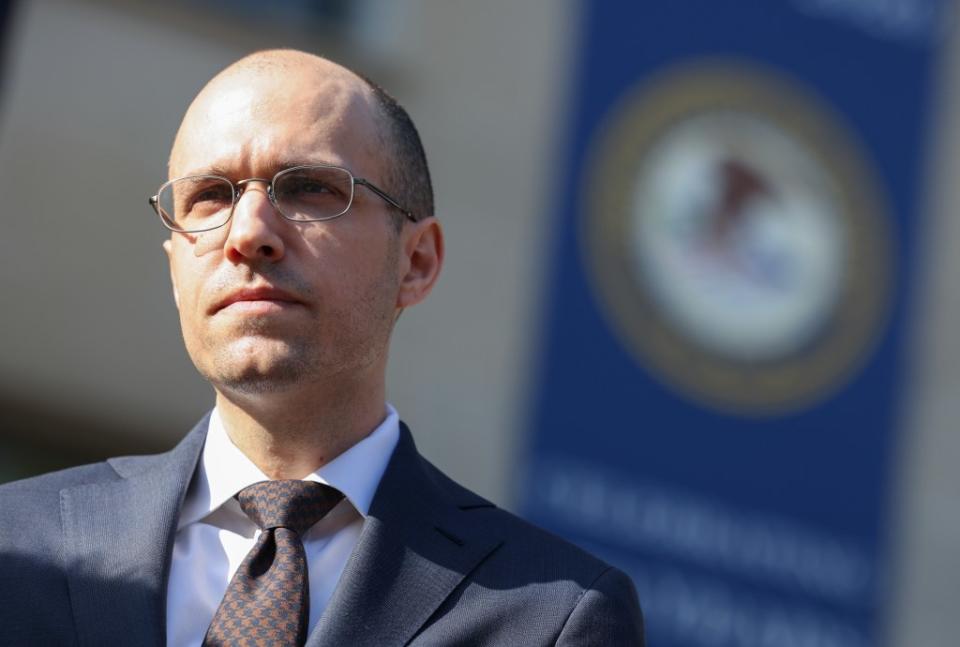Ex-NY Times staffer ‘received threats’ after paper outed him as editor of controversial Tom Cotton op-ed

- Oops!Something went wrong.Please try again later.
A former New York Times journalist who was assigned the task of editing a controversial op-ed by Sen. Tom Cotton (R.-Ark.) said he received threats after the newspaper identified him as the staffer who worked on the piece.
Adam Rubenstein, who described his two-year stint at the Gray Lady as being one of a “heretic” who was shamed by colleagues for liking Chick-fil-A sandwiches, was critical of the newspaper’s handling of the aftermath of the publication of Cotton’s op-ed on June 3, 2020.
Cotton, a former Army infantryman who served in Iraq and Afghanistan, called on then-President Donald Trump to invoke the Insurrection Act and deploy the military to quell rioting that erupted following the death of George Floyd.
The following day, Times reporter Edmund Lee wrote a story which identified Rubenstein as the staffer who edited and fact-checked Cotton’s piece.

“Every now and then, the group that handles security for the Times would check in on me to make sure I was safe,” Rubenstein wrote in The Atlantic on Monday.
“Ever since the paper had named me as the person responsible for publishing Cotton’s op-ed, I had been receiving alarming threats.”
According to Rubenstein, a friend contacted his girlfriend of seven years and demanded that she “take a stand” against “Adam’s role in promoting fascism.” The girlfriend refused and the two are engaged to be married, according to Rubenstein.

After the op-ed was published, more than 1,500 Times employees created a Slack channel devoted solely to the piece, according to Rubenstein, who recalled reading “thousands of messages plotting next steps and calling for a retraction, an editors’ note, [and] firings.”
Rubenstein blasted the newspaper’s leadership — then executive editor Dean Baquet and publisher A.G. Sulzberger — for caving to pressure from staffers who claimed that publication of Cotton’s piece put black people in danger.

Having been assigned the task of editing and fact-checking Cotton’s op-ed, Rubenstein wrote that a photo editor expressed solidarity with Black Lives Matter after he was asked to include an image from 1962 showing US troops enforcing the Insurrection Act in racially segregated Mississippi.
“A false equivalence, but historical images are there now,” the photo editor, Jeffrey Henson Scales, is reported to have told Rubenstein on Slack.
Scales then sent Rubenstein “the emoji of a black box, representing solidarity with the Black Lives Matter movement.”

Rubenstein recalled how his then-boss, op-ed page editor James Bennet, was accused of “putting black [Times] staffers in danger” by greenlighting Cotton’s op-ed.
The outcry eventually forced Bennet to resign. Last December, Bennet lashed out at his former employer’s liberal “bias” and said he was asked to add “trigger warnings” to op-eds by conservatives.
Rubenstein hit out at Times staffers who claimed their safety was in jeopardy due to the op-ed.
“It was an outlandish claim but next to impossible to rebut – how can you tell someone who says they’re not safe that, in fact, they’re fine?” Rubenstein wrote, noting that “in some states, troops had already been deployed to protect public safety.”
Rubenstein wrote that a business reporter for the Times, Edmund Lee, was assigned the task of writing a story on the controversy that the Cotton op-ed evoked in the newsroom.
“We know from sources you were the principal writer,” Lee wrote to Rubenstein, a claim that he called “ludicrous.”
Rubenstein referred Lee to the Times’ corporate communications shop, though he added in the note to Lee: “Off the record: I can categorically tell you that I did not write the Op-Ed.”

Lee’s story included the Slack exchange between Scales and Rubenstein.
Rubenstein accused Scales of having “shared with the reporters some of our Slack messages,” which was “against company policy.”
Lee’s story noted that Scales “raised an objection” about “a false equivalence.”
“Yeah, there are a few in there,” Rubenstein responded to Scales.
According to Rubenstein, Lee took the exchange out of context.
“The full exchange made clear that I had been talking about the photos,” Rubenstein wrote.
“Presented this way, many read it as a confession that I believed the article was drawing false equivalencies.”

Under pressure from staffers, the Times attached a note to Cotton’s op-ed saying that the editorial process was “rushed” and that “senior editors were not sufficiently involved.”
“Never mind, of course, that it wasn’t rushed, that senior editors were deeply involved, and that there were no correctable errors,” Rubenstein wrote.
Rubenstein lambasted the claim that Cotton was calling for massacring civilian protesters, writing that the op-ed “was explicit in distinguishing between protests and the undeniable violence and looting.”
A New York Times spokesperson told The Post that the newspaper stood by its decision to attach the editor’s note to Cotton’s op-ed.
“Our Opinion section’s commitment to publishing diverse views — including those that are unpopular, controversial or heterodox — is unwavering,” Times spokesperson Danielle Rhoades Ha told The Post.
Rhoades Ha added that “the commitment to publishing diverse opinions cannot be used as cover for bad process or shoddy work.”
“In this case, the piece itself and the series of decisions that led to its publication did not hold up to scrutiny,” she told The Post.

Rhoades Ha said that the Times review “found that despite concerns flagged by a number of editors, the review process was rushed through and cut out those editors who raised issues.”
“In fact, the top editor in Opinion agreed not to review the piece so it could be published more quickly,” she said, adding that “none of that was Adam’s fault.”
“As a junior member of the team, he deserved better editorial support and oversight,” according to Rhoades Ha.
In response to Rhoades Ha’s statement, Rubenstein wrote: “Please. What I and others really deserved were leaders who didn’t buckle under pressure and sacrifice their own to placate a loud and insurgent group at the paper.”

